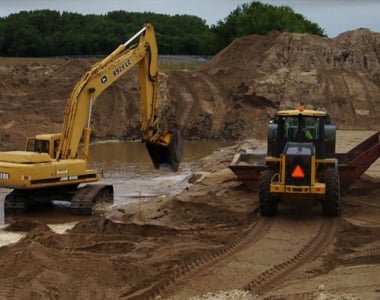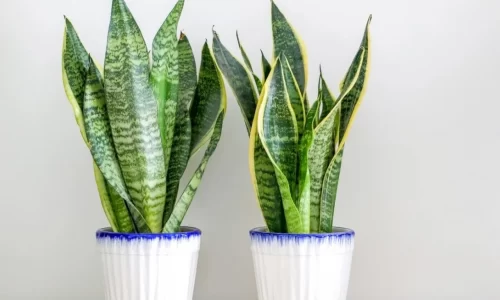Introduction:
Soil, the foundation of life on Earth, plays a crucial role in supporting plant growth, sustaining ecosystems, and providing us with food. However, soil contamination has become a pressing issue, with pollutants threatening its health and productivity. Cleaning contaminated soil is essential to restore its fertility and safeguard the environment. In this blog, we will explore the basic approaches to cleaning contaminated soil, emphasizing the importance of soil remediation for a sustainable future.
Physical Methods:
Physical methods involve the physical removal or separation of contaminants from the soil. These methods are effective for treating soils contaminated with large particles or debris. Some commonly employed physical methods include:
a. Excavation and Removal:
This method involves digging up and removing the contaminated soil from the site. The excavated soil is then transported to a designated facility for proper treatment and disposal.
- Soil Washing:
Soil washing employs water or chemical solutions to extract and separate contaminants from the soil. The contaminated soil is mixed with a washing solution, and the resulting slurry is passed through various separation techniques, such as sedimentation, filtration, and centrifugation.
c. Soil Vapor Extraction:
This technique utilizes a vacuum system to extract volatile contaminants from the soil. By applying a vacuum to the soil, the volatile contaminants are vaporized and collected for further treatment, while the soil is left cleaner.
Chemical Methods:
Chemical methods involve the use of the chemical agents to alter the contaminants’ chemical composition or transform them into less harmful substances. These methods are particularly useful for treating soils contaminated with organic compounds. Here are some common chemical methods:
a. Soil Stabilization:
Soil stabilization aims to reduce the mobility of contaminants by adding certain chemicals or binders. These agents react with the contaminants, immobilizing them and preventing their spread. Lime, cement, and phosphate-based amendments are commonly used for soil stabilization.
b. Chemical Oxidation:
Chemical oxidation involves introducing strong oxidizing agents, such as hydrogen peroxide or ozone, into the contaminated soil. These agents break down the organic contaminants into less toxic compounds through oxidation reactions.
c. Chemical Reduction:
Chemical reduction is the process of adding reducing agents, like zero-valent iron or sodium dithionite, to convert toxic metals into less harmful forms. This method is often employed for treating soil contaminated with heavy metals.
Biological Methods:
Biological methods utilize living organisms or their metabolic processes to degrade or detoxify contaminants naturally. These methods are eco-friendly and can be applied to various types of contaminants. Common biological methods include:
a. Bioremediation:
Bioremediation involves the use of microorganisms, such as bacteria or fungi, to break down or transform contaminants into harmless substances. The microorganisms can utilize the contaminants as a food source and metabolize them, reducing their toxicity.
b. Phytoremediation:
Phytoremediation utilizes plants’ natural abilities to absorb, accumulate, and break down contaminants. Certain plants, known as hyper accumulators, have a high tolerance for and can accumulate large amounts of contaminants in their tissues. They can be cultivated to remove contaminants from the soil effectively.
Thermal Methods:
Thermal methods utilize heat to treat contaminated soil by either volatilizing or decomposing the contaminants. These methods are particularly effective for soils contaminated with persistent organic pollutants. Some commonly used thermal methods include:
a. Incineration:
Incineration involves subjecting the contaminated soil to high temperatures in a controlled environment. The heat volatilizes the contaminants, and they are subsequently collected and treated separately. Incineration is highly effective for destroying organic contaminants but requires careful management of emissions.
b. Thermal Desorption:
Thermal desorption involves heating the contaminated soil to vaporize the contaminants. The volatilized contaminants are then collected and treated. This method is commonly used for treating soils contaminated with petroleum hydrocarbons.
Electro kinetic Remediation:
Electro kinetic remediation is a specialized method that utilizes electrical currents to move contaminants through the soil and extract them. This technique is particularly effective for treating soils contaminated with heavy metals and ions. By applying an electric field, the contaminants are mobilized and transported towards specific electrodes for collection and removal.
Combination Approaches:
In many cases, a combination of different remediation approaches is employed to address complex soil contamination scenarios. This integrated approach maximizes the effectiveness of soil cleaning by synergistically combining the strengths of various methods. For example:
a. Sequential Remediation:
Sequential remediation involves applying different techniques in a specific order to tackle different types of contaminants. For instance, physical methods like excavation and soil washing can be employed initially to remove large debris and reduce the overall contamination level. Subsequently, biological or chemical methods can be used to further treat the remaining contaminants.
b. Hybrid Remediation:
Hybrid remediation combines two or more methods simultaneously to achieve comprehensive soil cleaning. For example, combining bioremediation with soil washing can enhance the degradation of organic contaminants and facilitate the removal of remaining contaminants through physical separation.
c. Phytoremediation-Assisted Techniques:
Phytoremediation can be used in combination with other methods to enhance their effectiveness. Plants can improve the efficiency of bioremediation by providing a favorable environment for microbial activity. Additionally, their root systems can help with soil stabilization and prevent erosion during physical remediation processes.
Monitoring and Post-Remediation Measures:
After implementing soil remediation techniques, it is crucial to monitor the soil’s progress and conduct regular assessments to ensure the effectiveness of the chosen methods. Monitoring includes analyzing soil samples to determine contaminant levels and evaluating the success of remediation efforts. If necessary, additional treatments or adjustments to the chosen methods can be made.
Furthermore, implementing post-remediation measures is essential to prevent recontamination and promote the long-term health of the soil. These measures may include implementing erosion control measures, restoring vegetation cover, and implementing land use practices that are compatible with the soil’s condition.
Conclusion:
Addressing soil contamination through effective remediation techniques is crucial for preserving the health of ecosystems, protecting human health, and promoting sustainable land use. By understanding and utilizing the basic approaches to cleaning contaminated soil, we can make significant strides towards restoring the fertility and quality of our soils.
It is essential to approach soil remediation on a case-by-case basis, considering factors such as the nature and extent of contamination, site-specific conditions, and regulatory requirements. Collaborating with environmental professionals, scientists, and experts in the field is crucial to develop and implement the most suitable remediation strategies.
Remember, soil is a valuable resource that sustains life, and by investing in its restoration, we contribute to a healthier environment and a more sustainable future. Let us continue to prioritize soil protection and remediation efforts, recognizing the significance of this precious resource for the well-being of our planet and future generations.
[youmightlike]










